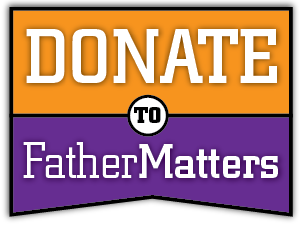Alarming Effects of Children’s Exposure to Domestic Violence
By Blake Edwards LMFT
Domestic violence (DV) takes many forms, including chronic arguing and yelling, controlling behaviors, intimidation, threats of suicide or murder, threats involving weapons, and serious injuries. There is always, however, a destructive undercurrent of power and control, with offenders commonly and compulsively grasping for in a surrogate the control that is lacking within themselves. Any pattern of behaviors in intimate relationships marked by coercive control can be a signal or foreshadowing of abuses.
The Centers for Disease Control and Prevention have reported that in homes where violence between partners occurs, there is a 45% to 60% chance of co-occurring child abuse, a rate 15 times higher than the average. Even when they are not physically attacked, children witness 68% to 80% of domestic assaults. These numbers are a sobering reminder of the toll a violent environment takes on kids.
The circumstances of DV leave caregivers—emotionally and otherwise—unavailable and unresponsive, and activate in kids a primal fear and a host of other raw, complex, and unresolved emotions. The pioneering psychiatrist and researcher Daniel Siegel (2004) instructed, “The mind develops as the brain responds to ongoing experience… The pattern of firing of neurons is what gives rise to attention, emotion, and memory.” And what fires together—in a combination of violent exposures and the child’s underlying neurobiological experience—wires together.
The psychological aftermath of exposure to DV can include fear of harm or abandonment, excessive worry or sadness, guilt, inability to experience empathy or guilt, habitual lying, low frustration tolerance, emotional distancing, poor judgment, shame, and fear about the future.
The attention given, emotions felt, and memories imprinted onto a child’s brain in moments of stress become inextricably linked together and forever taint—or else filter—feelings, beliefs, and choices in relationships and so many other facets of life. These children are not merely innocent bystanders. They are victims.
Although they may be unintended victims, living within a climate of chronic emotional volatility and near acute incidents of aggression has a way of searing a neurophysiological muddle—painful and isolating emotions existing alongside ongoing and frequently unmet needs for affection and attachment.
Parents who are themselves batterers are more irritable, less involved in child rearing, more likely to use severe and erratic physical punishment, and less able to distinguish their children’s needs from their own. Both parents, regardless of culpability, risk poor emotional attunement with their children and, consequently, a decreased capacity to recognize stress and danger—protective factors which might increase a child’s resiliency.
Compared with other kids, those who have witnessed DV experience far greater incidence of insomnia, bed wetting, verbal, motor, and cognitive issues, learning difficulties, self-harm, aggressive and antisocial behaviors, depression and anxiety, as well as, most troubling, adult domestic violence, with boys often becoming offenders, victims, or both, and girls more likely to become victims (Brown and Bzostek, 2003).
A growing body of literature has revealed that children who have been exposed to DV are more likely than their peers to experience a wide range of difficulties, from anger and oppositional behavior, to fear, low self-worthand withdrawal, to poor sibling, peer, and social relationships. Studies have found evidence of much higher rates of pro-violence attitudes, rigid stereotypical gender beliefs involving male privilege, animal abuse, bullying, assault, property destruction, and substance abuse.
A study by Kilpatrick, Litt, and Williams (1997) concluded that witnessing DV is an experience in and of itself sufficiently intense to precipitate posttraumatic stress in children. The Adverse Childhood Experiences (ACE) study led by the Centers for Disease Control and Prevention has classified exposure to DV as one of several adverse childhood experiences contributing to poor quality of life, premature death, and risk factors for many of the most common causes of death in the United States.
In addition to the exposure itself, other factors influence impact, including the nature of the violence, age of the child, elapsed time since exposure, the child’s gender, and presence of physical or sexual abuse.
Children who witness fewer incidents of violence and experience positive interactions between caregivers may be, for instance, less detrimentally impacted than those exposed to frequent and extreme aggression. Younger children exhibit more concerning levels of psychological distress than older, more developmentally mature children. Children are highly anxious and fearful immediately after witnessing an incident of DV and less observably so as time passes, but this should not be assumed to indicate an absence of anxiety or fear. Boys tend to exhibit more externalizing behavior problems such as aggression and acting out, while girls tend to exhibit more internalizing behavior problems such as social withdrawal and depression.
It nearly goes without saying that children who are exposed to DV and are also physically or sexually abused are at a higher risk for emotional and psychological problems than those who witness such violence and are not physically or sexually abused.
In so many cases, it is difficult for those outside of these family systems to know with sufficient clarity what is going on, and it is often difficult to know how best to intervene. And unfortunately, the reality is that in many cases, meaningful intervention occurs only after a child has endured direct and continued exposure to DV.
Thank goodness there are protective factors that can mitigate the worst impacts, including a child’s literacy and overall intelligence, the extent to which the child is outgoing and socially competent, and whether the child has safe and supportive relationships with at least one influential adult (Carlson, 2000; Edleson, 2011; Hughes, et al., 2001).
As a society, we have an opportunity and responsibility to inject resiliency through academic, emotional, and social support. We must all grapple with whether there are ways we might more effectively intervene within our families, schools, and communities to instigate help and healing.




